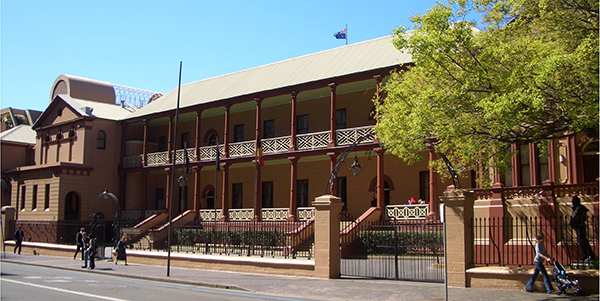
A missed opportunity: the NSW Parliamentary report on vaping falls short
Posted on August 12, 2024 By Colin
LAST WEEK, THE NSW PARLIAMENTARY INQUIRY into vaping regulation released its long-awaited report. The result was predictable and disappointing and has failed the people of NSW.
From the outset, the report adopts an alarmist tone, boldly claiming that “Vaping is one of the biggest public health challenges our country currently faces” and “threatens to undermine years of progress in tobacco control.” Such statements are not only exaggerated but reveal the report’s overall bias and lack of nuance.
The Committee’s findings were heavily influenced by a barrage of misinformation and selective evidence from organisations like Lung Foundation Australia and the Australian Medical Association - groups that have consistently opposed vaping despite mounting evidence of its potential as a harm reduction tool.
The report is lost in a moral panic about youth vaping and recklessly dismisses the lifesaving opportunity to help adult smokers quit. The overall impact on public health of this report will be negative
Moral panic over youth vaping
1. Frequency of vaping
The report’s primary focus is an exaggerated fear about the frequency of vaping by young people. However, most vaping by young people who have never smoked is experimental, occasional and short-term and is of little public health importance. Half of all youth who vape do so only once or twice.
Only regular vaping has the potential to cause harm, but this is uncommon, especially in non-smokers. The 2023 ASSAD survey, for instance, found that only 3% of 12-17-year-olds vape daily.
2. Harm from vaping
The report overstates the harm from youth vaping which it describes as "a significant public health issue". In contrast, our recent review of the evidence concluded that "Youth vaping carries relatively minor health risks". Here are some examples of flawed claims
- It overstates the rate of nicotine addiction. In contrast, the National Drug Strategy Household Survey reported that only 3% of 14-17-year-olds were “unable to stop or cut down” vaping in 2023
- It promotes the debunked "gateway effect"—the idea that vaping leads to smoking. However, there is substantial evidence to the contrary. In reality, vaping is diverting young people away from smoking overall
- The claim that vaping worsens mental health symptoms in young people is not evidence-based. In fact, many young people use vaping to manage anxiety and depression
- Concerns about harm to adolescent brain development were raised without any credible evidence to support such claims.
Exaggerated risks and misleading claims
Much of the information provided to the Committee was exaggerated and misleading. For instance, the serious lung disease EVALI was raised, despite the clear evidence that EVALI was caused by black-market THC products, not nicotine vaping. Similarly, there is no evidence that vaping causes scarred lungs or seizures.
One academic even went so far as to claim that “there is strong evidence that use of e-cigarettes has multiple health harms and no health benefits.” She warned the Committee about the presence of harmful chemicals without mentioning that most were in very small doses, well below harmful levels.
The neglected needs of smokers
The most significant oversight is the report’s failure to properly consider the needs of adult smokers
Vaping is a lifesaving substitute for smokers who are otherwise unable to quit. Numerous studies have shown that switching to vaping dramatically reduces exposure to toxicants and leads to substantial health improvements.
Many experts giving evidence ignored the high-quality evidence that vaping is the most effective quitting aid available, with one health charity claiming that the evidence for vaping as a quitting aid is “patchy at best.” An academic asserted that smokers who vape to quit are twice as likely to relapse - a grossly misleading claim.
While the Committee grudgingly acknowledged that vaping “may help some people quit smoking when delivered in a controlled way and with advice from a primary healthcare provider,” they failed to recognize that only a tiny fraction of smokers are willing to follow this medical pathway.
The wrong approach to regulation
The Committee's main recommendation to eliminate illicit vapes by a crackdown is naive and is bound to fail. History has shown that harsh bans and enforcement of popular illicit drugs do not reduce supply and are rarely successful.
The illicit market is firmly established and run by criminal networks, and the only way to eliminate it is to replace it with a legal and regulated one
A far more effective solution is for vapes to be sold as adult-only consumer products from licensed retail outlets, with strict age verification, like tobacco and alcohol. Age-of-sale breaches can be minimised by the use of CCTV, large fines, and loss of licence.
Conclusion: a missed opportunity
The NSW Parliamentary Committee had a chance to embrace a progressive, evidence-based harm reduction approach to vaping that could have improved public health overall. Instead, it succumbed to moral panic about youth vaping. The recommendations perpetuate a failed model, leaving the health of countless smokers at risk. It's time for a rethink—before it's too late.
Documents
My evidence at the hearing, 12 April 2024